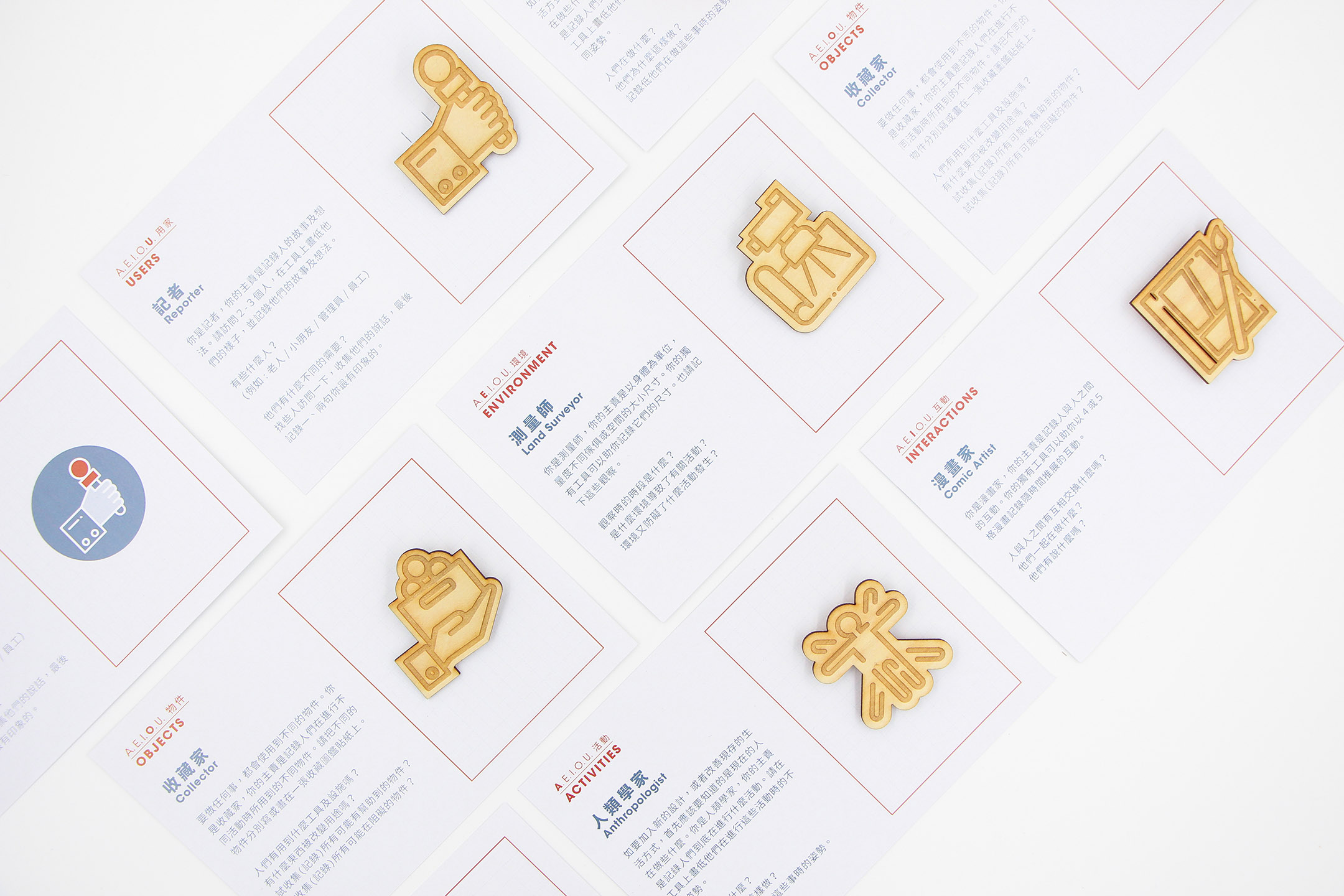PolyU Jockey Club “Operation SoInno” (2020)
The SoInno Design Education Workshop will lead the students in learning through design playing, design thinking and design making. For example, System Map to incorporate workflow elements; “Idea Battle Cards” to assess the proposal; cut shapes and assembling to visualise 3D-images with 2-dimensional shapes; and associate irrelevant items to create randomized brainstorming. Participating schools include Shun Tak Fraternity Association Yung Yau College, Heep Yunn School and PLK Vicwood KT Chong Sixth Form College. To facilitate the learning and design thinking process of the student participants, a series of tools were designed for the workshops.
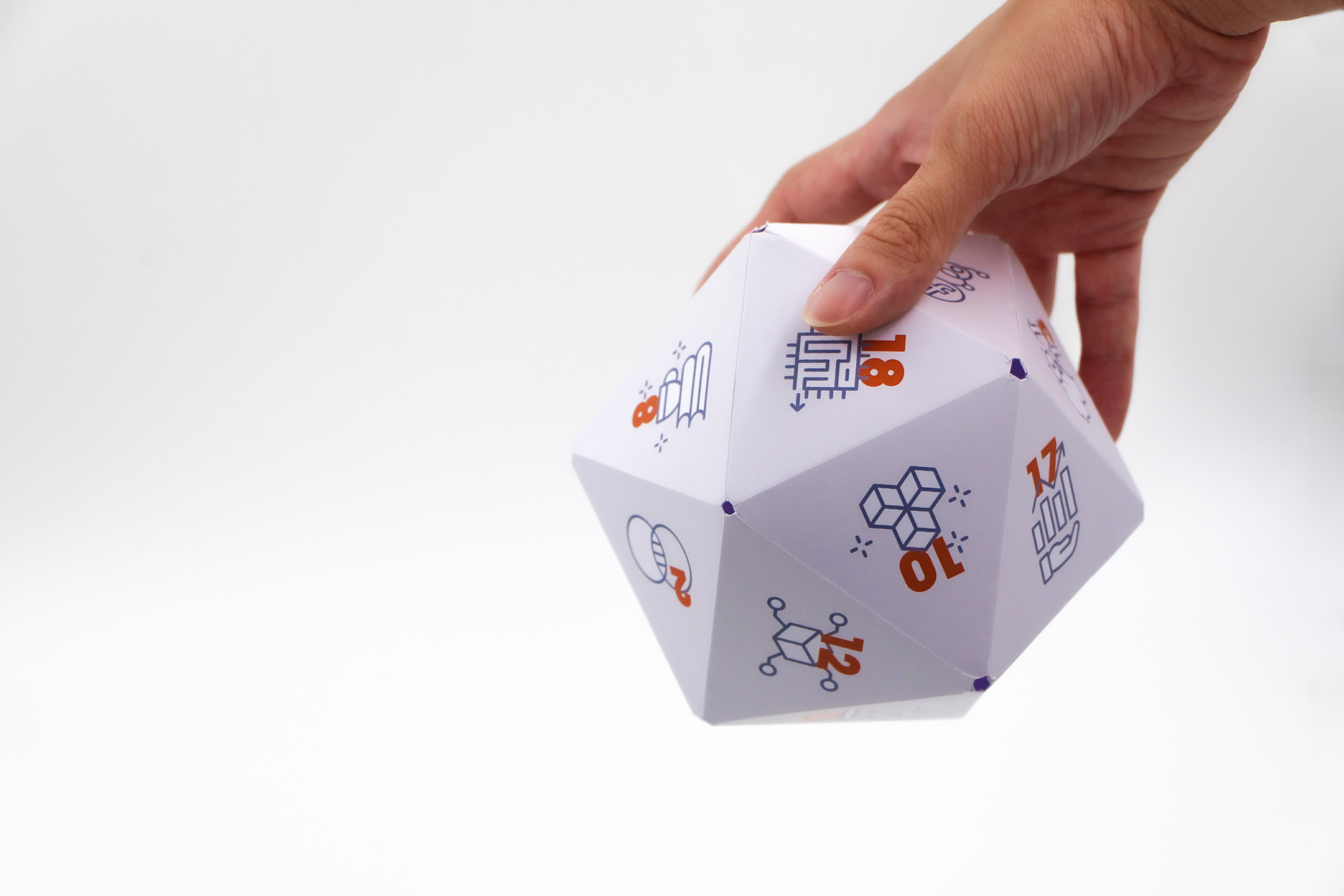
Design Logbook and Stamp
Experience has shown that students sometimes find it difficult to connect all of the different separate sessions or tasks such that they have a sense of continuity, even though the tasks are set out to be accumulative. Each student has an individual log sheet on which to record the process. Additionally, the log sheet helps the student to condense the discussion into concrete and precise focal points at each stage. The log sheet also provides space for the students to go back and forth between different stages of the design process. The facilitators also have a log sheet for each small group to record on.
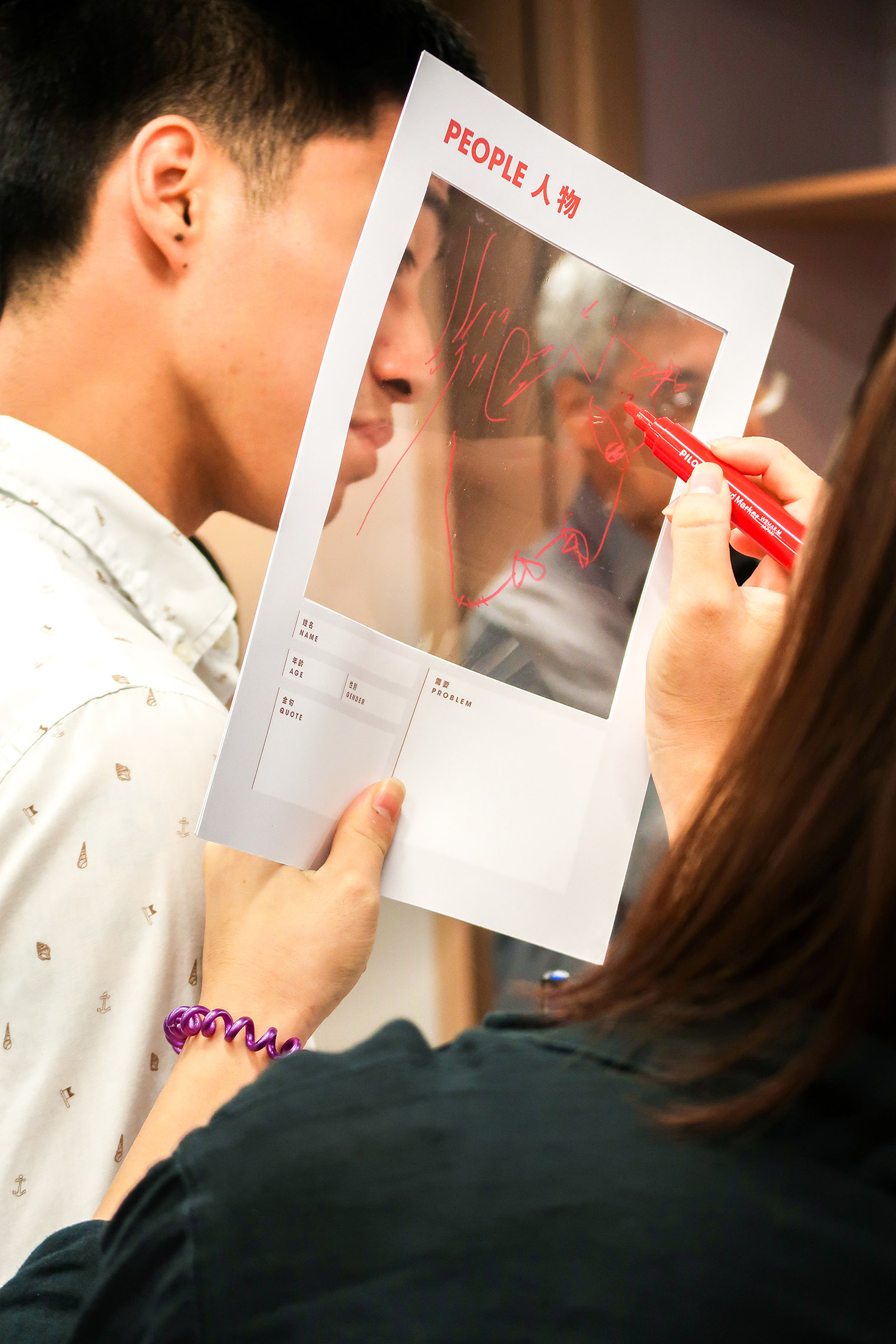
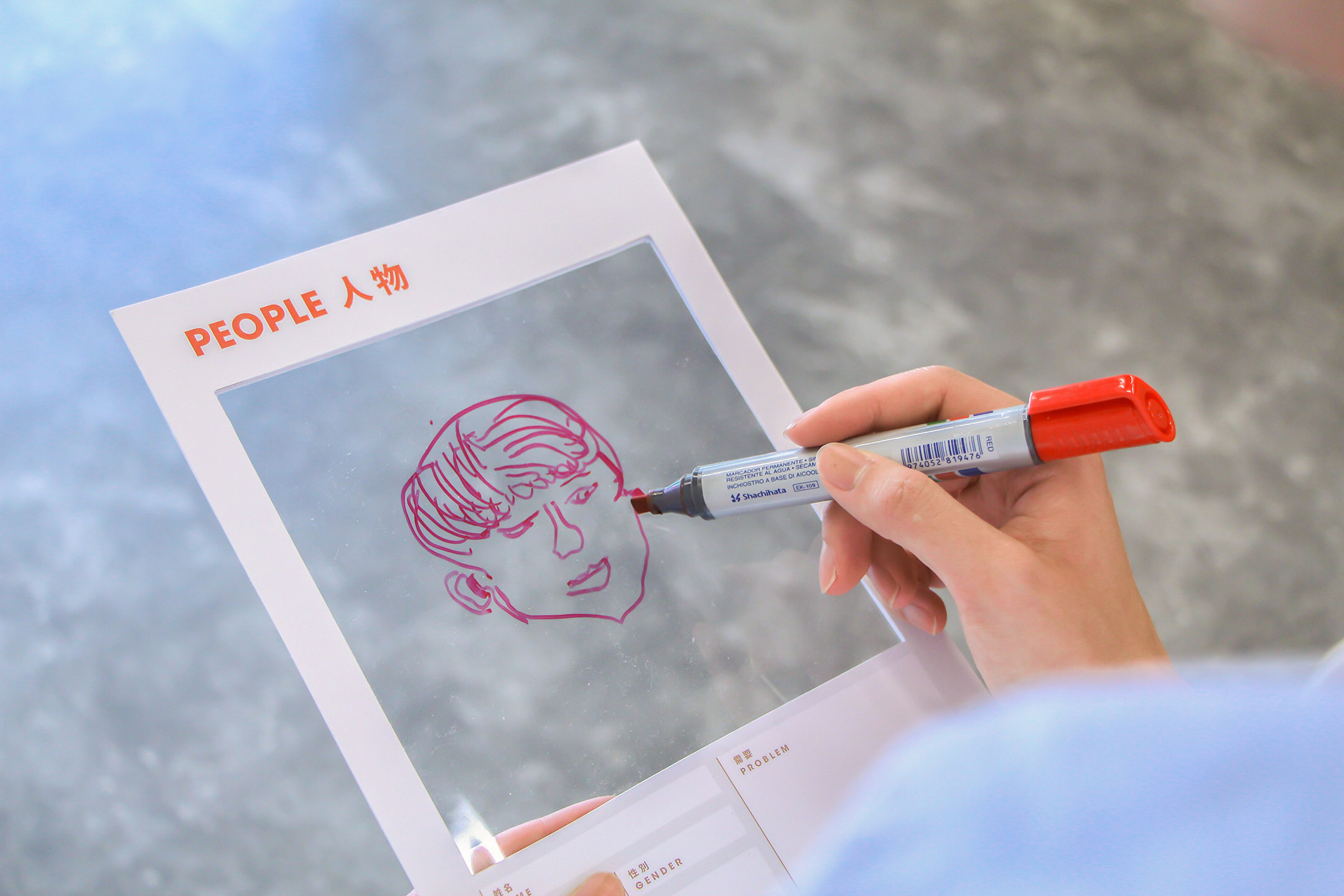
Statement Stand
In the hectic design process, it is common even for professional designers to detour from what they originally planned to tackle. Experienced designers more often than not harness this type of distraction as a source of unexpected inspiration. However, it is also important to stay focused on the task. The statement stand acts as a reminder for the design team to bear in mind the main goal of the project and the needs of the users.
AEIOU Set
Students become familiar with various methodologies of observation. They acquire the ability to gain insights from real-life situations and scenes. Students also learn how to categorise those insights in a meaningful way. AEIOU is a framework that helps the student to interpret observations and to attend to, document and code data under a guiding taxonomy of Activities, Environments, Interactions, Objects and Users.

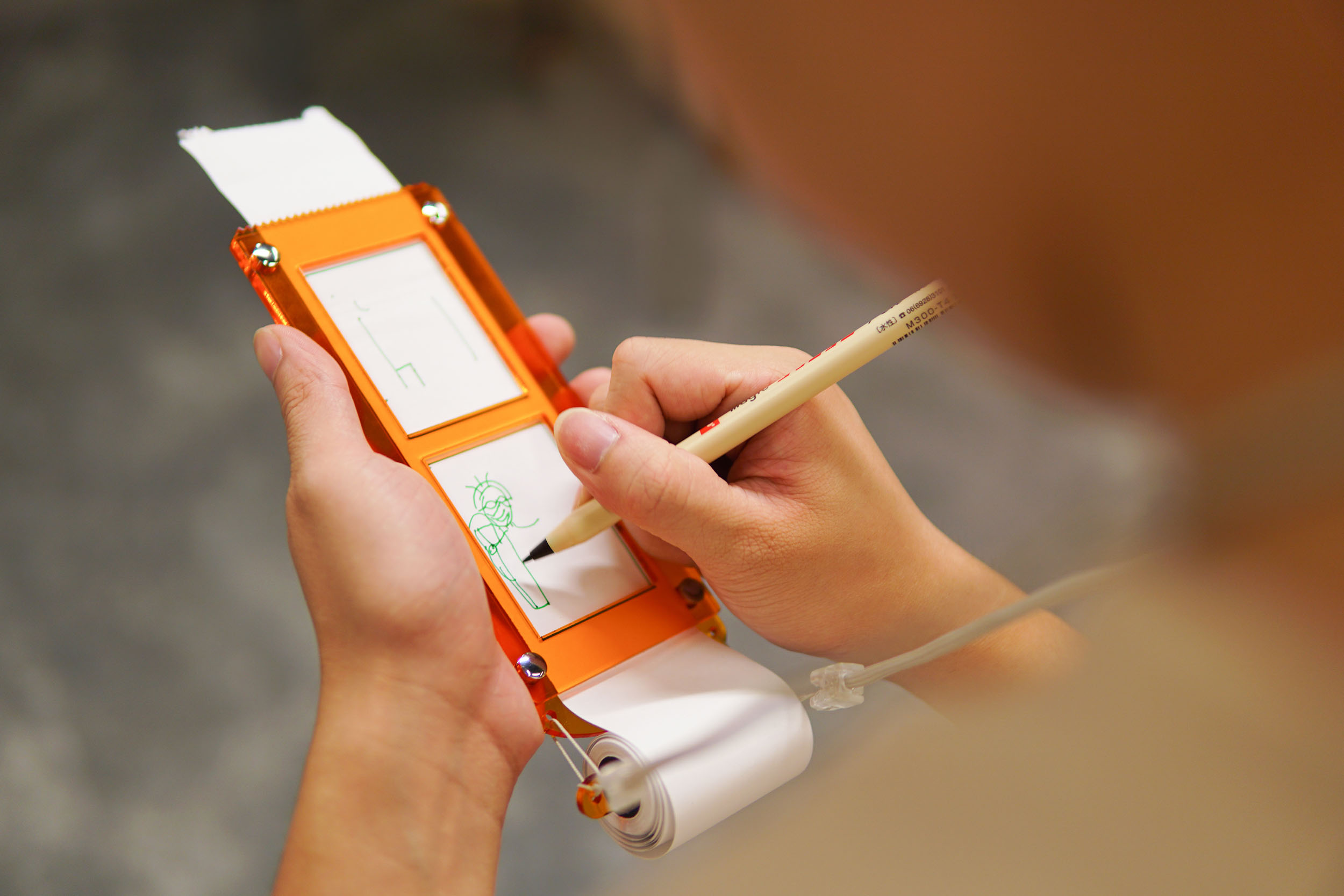

AEIOU Badge
There is a set of tools for the division of labour and helping the students record their observations more concretely. Each student is assigned a role with a recording tool accompanying it. Each student has a badge that states their role in the team.
“Activity” Tool
There are three sets of ‘Draw the gestures’ record sheets for the students to record people’s gestures while the people are engaging in different activities. The three sets are ‘Sit’, ‘Lie’ and ‘Stand’. Students make use of the skeleton templates as guides for drawing.
“Environment” Tool
Students are encouraged to use their own body as measuring units (e.g., their feet and arms) and to record measurements on the measuring tool graph paper. The students use measuring tapes and the cells of the graph paper to draw to scale.
“Interaction” Tool
The comic drawing tool helps the students to draw interactions that are unfolding in time. Students hang the tool around the neck and then draw on the roll of paper to record the ‘frames’ of the continuous moments of different interactions. The students cut off the finished comic strip using the edge at the end of the tool.
“Object” Tool
The object collector tool is designed to help the students to identify different artefacts that are being used in the scene. Students hang the tool around the neck and draw the relevant objects on the orange dot stickers. The collected items are discussed and chosen for a later stage of the design process.
“User” Tool
Students who are given the user tool are responsible for interviewing people about their thoughts on an issue of concern and recording those thoughts. Students draw the face of the person who they have interviewed on the transparent part of a ‘People’ profile card. It is important that they get one or two quotations from the interviewees.
PolyU Jockey Club “Operation SoInno”
Presented by The Hong Kong Polytechnic University
There is a set of tools for the division of labour and helping the students record their observations more concretely. Each student is assigned a role with a recording tool accompanying it. Each student has a badge that states their role in the team.
“Activity” Tool
There are three sets of ‘Draw the gestures’ record sheets for the students to record people’s gestures while the people are engaging in different activities. The three sets are ‘Sit’, ‘Lie’ and ‘Stand’. Students make use of the skeleton templates as guides for drawing.
“Environment” Tool
Students are encouraged to use their own body as measuring units (e.g., their feet and arms) and to record measurements on the measuring tool graph paper. The students use measuring tapes and the cells of the graph paper to draw to scale.
“Interaction” Tool
The comic drawing tool helps the students to draw interactions that are unfolding in time. Students hang the tool around the neck and then draw on the roll of paper to record the ‘frames’ of the continuous moments of different interactions. The students cut off the finished comic strip using the edge at the end of the tool.
“Object” Tool
The object collector tool is designed to help the students to identify different artefacts that are being used in the scene. Students hang the tool around the neck and draw the relevant objects on the orange dot stickers. The collected items are discussed and chosen for a later stage of the design process.
“User” Tool
Students who are given the user tool are responsible for interviewing people about their thoughts on an issue of concern and recording those thoughts. Students draw the face of the person who they have interviewed on the transparent part of a ‘People’ profile card. It is important that they get one or two quotations from the interviewees.
PolyU Jockey Club “Operation SoInno”
Presented by The Hong Kong Polytechnic University
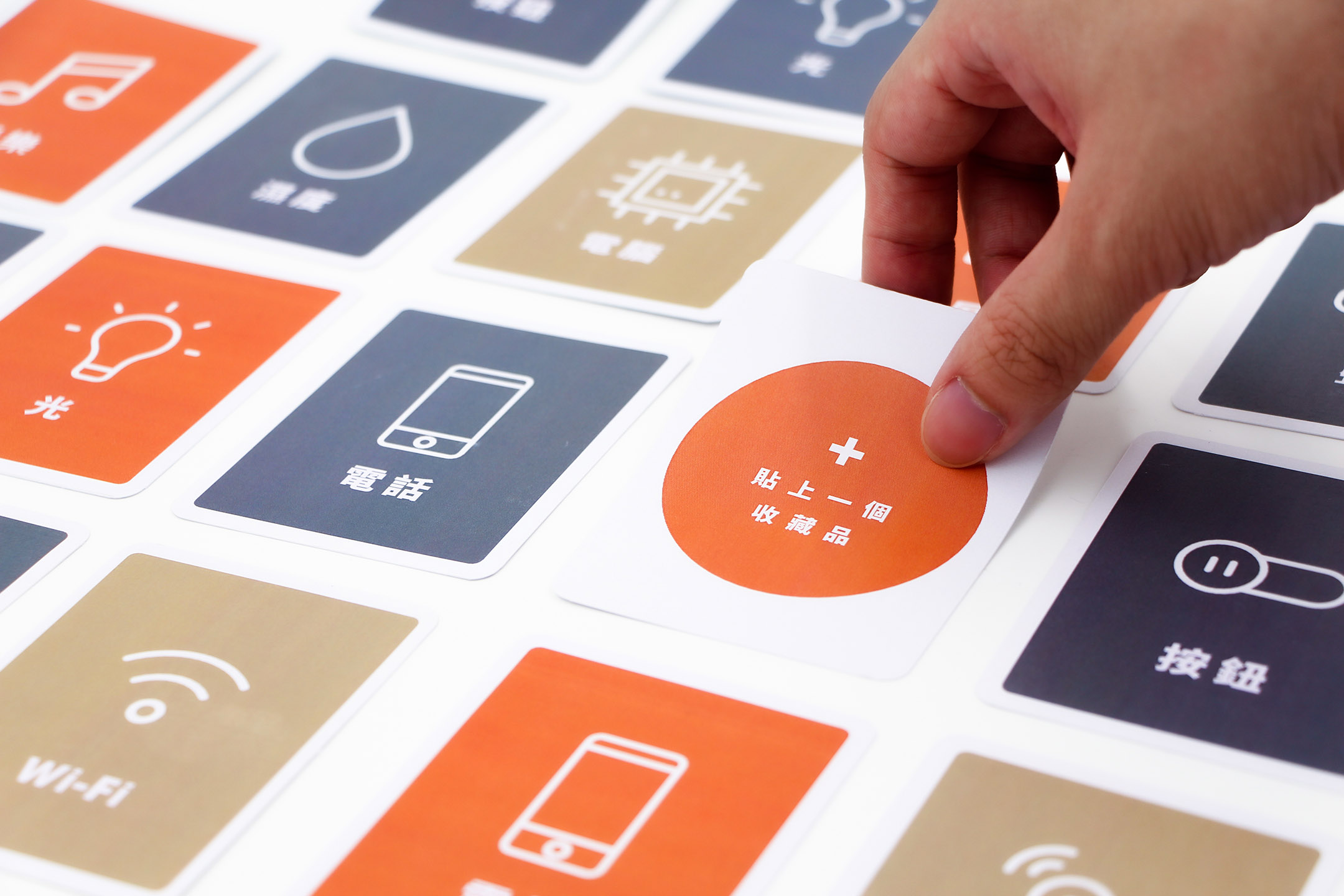
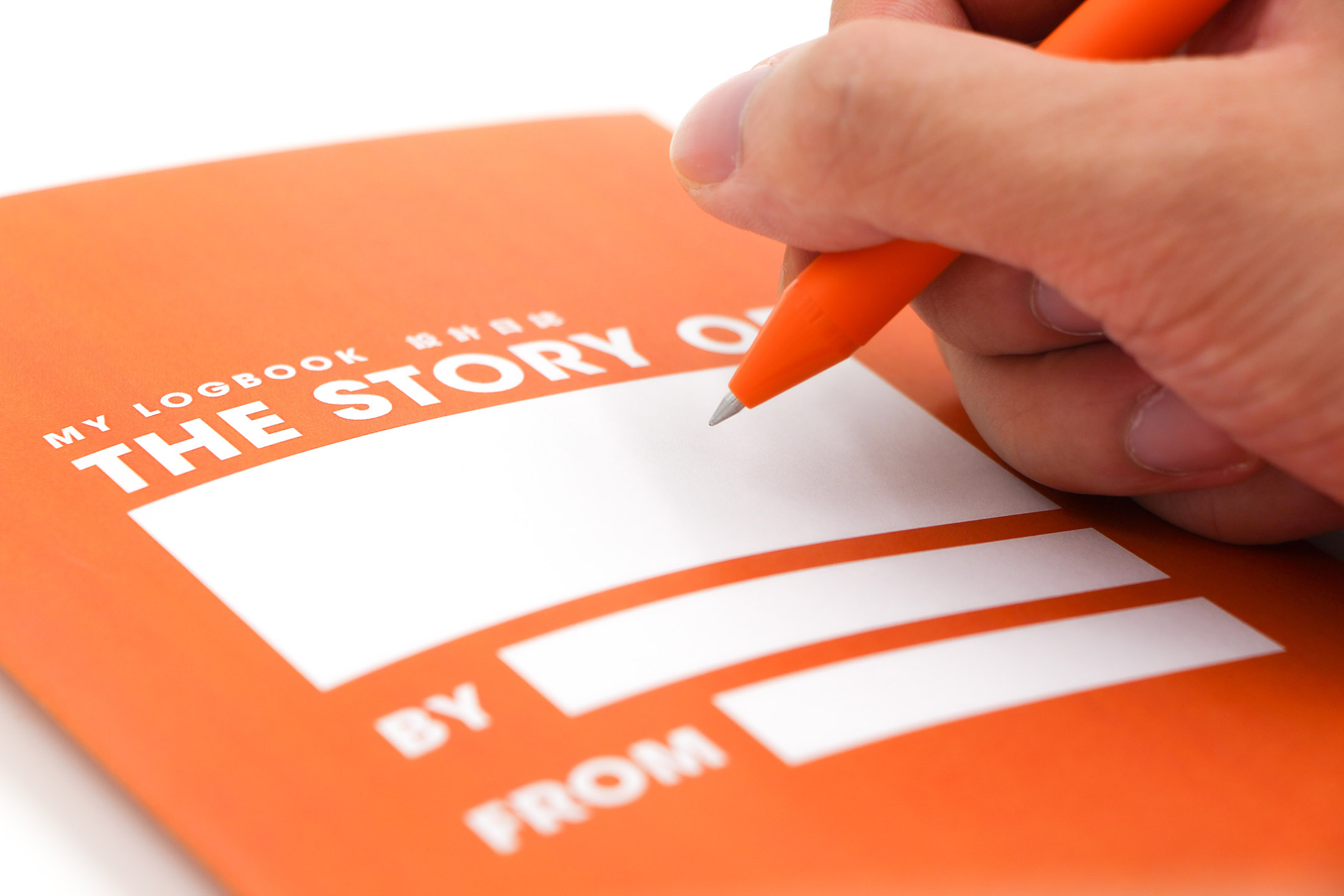
J.C.DICI「騷‧In‧廬」: 啟迪創新習作
2020
由香港理工大學(理大)賽馬會社會創新設計院主辦及香港賽馬會慈善信託基金捐助,啟迪創新習作工作坊帶領學生透過設計玩學、設計思維和設計製造進行學習,例如利用System Map幫整合流程,以Idea Battle Cards評估方案,剪出並拼湊形狀、立體化構想,或是以聯想來做隨意 (Random) 的構思 (Brainstorming) 。參與學校包括順德聯誼總會翁祐中學、協恩中學及保良局莊啟程預科書院。當中應用了一些設計工具,用以啟發中學生自主學習。
設計日誌和印章
經驗表明,學生有時會發現很難透過聯繫不同任務來產生連續感,即便這些任務應為累積性亦然。每個學生都有一個單獨的日誌表,用於記錄該過程。此外,日誌表可幫助學生將每個階段的討論濃縮、聚焦。日誌表還為方便學生在設計過程的來回查看進度。此外,每個小組亦有一份小組日誌表以供記錄。
工作目標架
在繁忙的設計過程中,即使是專業設計師也經常會偏離他們最初計劃解決的問題。經驗豐富的設計師往往會利用這種分心作為意想不到的靈感來源。但是,保持專注於任務也很重要。工作目標架提醒設計團隊牢記項目的主要目標和用戶的需求。
AEIOU套裝
學生開始熟悉各種觀察方法、獲得洞察現實生活中情景中力的能力,還能學習如何以有意義的方式對這些見解進行分類。 AEIOU 是一個框架,幫助學生在活動、環境、交流、物件和用戶的指導分類下解釋觀察結果,並關注、記錄數據。
AEIOU徽章
這套工具可以協助學生分工、並幫助他們更具體地記錄觀察。每個學生都被分配了一個角色,並附帶一個記錄工具。每個學生都有一個徽章,表明他們在團隊中的角色。
「活動」工具
共有三套“畫手勢”記錄表,供學生記錄人們在進行不同活動時的手勢,分別是「坐」、「躺」和「站」。學生會使用骨架模板作為繪畫指南。
「環境」工具
學生們使用自己的身體作為測量單位(例如,腳和手臂),並在方格紙上記錄測量結果,然後使用捲尺和方格紙的方格按比例繪製。
「交流」工具
漫畫繪圖工具幫助學生繪製及時展開的互動。學生將工具掛在脖子上,然後在紙捲上畫畫,記錄不同互動的連續「畫格」。學生們然後利用工具的末端將完成的連環畫裁剪出來。
「物件」工具
對象收集器工具旨在幫助學生識別場景中使用的不同人工製品。學生將工具掛在脖子上,並在橙色圓點貼紙上畫出相關物體。收集的項目將在設計過程的後期進行討論和選擇。
「用戶」工具
獲得用戶工具的學生負責採訪人們對關注問題的想法並作記錄,然後在「人物」資料卡的透明部分畫出受訪者的臉。最為重要的是,他們需要引用一至兩句受訪者的話。
理大賽馬會社創「騷‧In‧廬」
香港理工大學主辦
